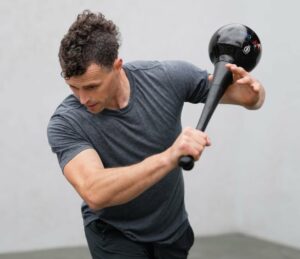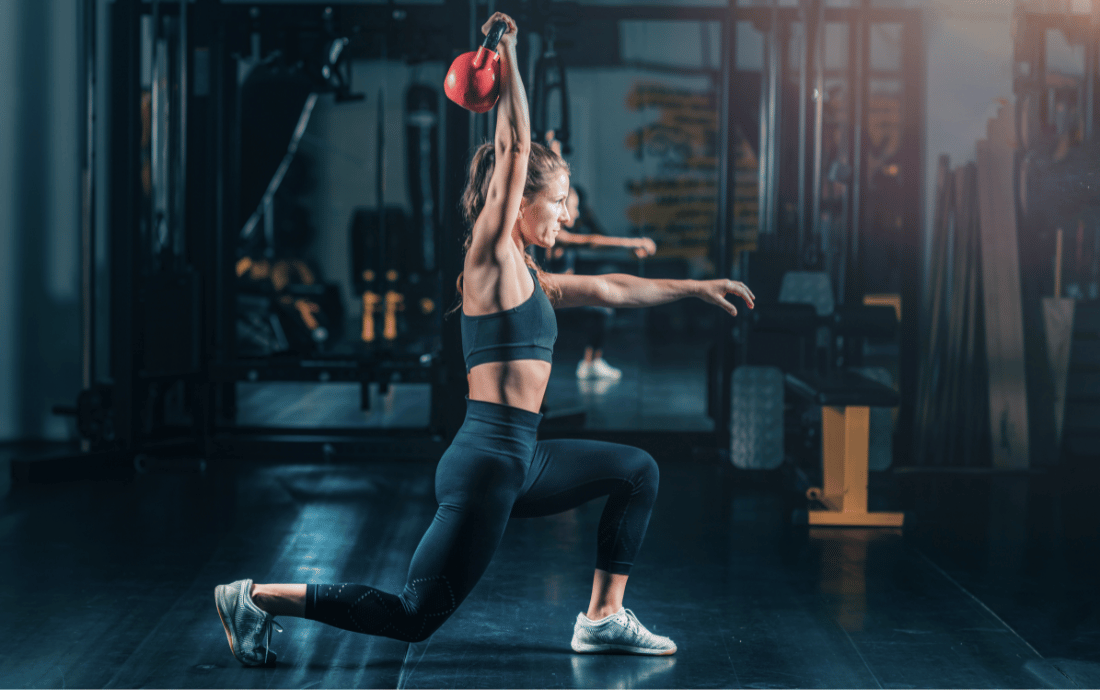In athletic training and sports performance, raw strength alone isn’t enough. Athletes must be able to generate force efficiently, move fluidly across multiple planes, and maintain stability in unpredictable conditions. Functional strength training is the missing link between raw power and sport-specific performance, helping athletes build strength that directly translates to their sport.
Traditional resistance training has long been the gold standard for building muscle and improving strength. However, a growing body of research suggests that functional training—exercises designed to enhance movement patterns used in real-life activities—offers distinct advantages for athletes.
Understanding Functional Strength Training
What is Functional Strength Training?
Functional strength training focuses on exercises that replicate real-world movement patterns. Unlike traditional bodybuilding-style workouts that isolate individual muscles, functional training engages multiple muscle groups simultaneously, mimicking the demands of an athlete’s sport (Cook, 2012). This includes movements like pushing, pulling, squatting, hinging, rotating, and lunging—all of which are essential in sports performance.
Functional training improves:
Speed – Increased force production and acceleration
Power – Enhanced ability to generate explosive movements
Balance – Greater stability for dynamic movements
Agility – Improved coordination for rapid changes in direction
Muscular endurance – Resistance to fatigue during high-intensity efforts
Coordination – Optimized neuromuscular response for fluid movement
The Science Behind Functional Training
A systematic review analyzed the effects of functional training on athletic performance, finding significant improvements in speed, muscular strength, power, balance, and agility. However, evidence of its effects on flexibility and muscular endurance remains limited. Another study found that functional training interventions led to improvements in sprinting, jumping, and overall functional movement in athletes, further reinforcing its benefits.
Functional training differs from traditional resistance training by incorporating:
Multi-joint movements rather than isolated exercises
Multi-planar motion (sagittal, frontal, and transverse)
Unstable surfaces (Bosu balls, balance boards) to improve proprioception
Explosive movements like plyometrics and Olympic lifts
Sport-specific drills tailored to an athlete’s discipline
Benefits of Functional Strength Training for Athletes
1. Improved Athletic Performance
Functional training enhances sport-specific strength by training movement patterns, not just muscles. This allows athletes to apply strength in a more coordinated, efficient, and powerful way. For example:
Sprinters benefit from functional training’s emphasis on power and acceleration.
Combat athletes improve balance and core strength for grappling exchanges.
Motocross racers develop grip strength and full-body stability to maintain control of the bike over rough terrain.
Parkour athletes require dynamic power and landing stability, both of which functional training improves.
Surfers benefit from improved balance, rotational power, and lower-body stability to generate speed and maintain control on unpredictable waves.
Rock climbers enhance grip endurance, core stability, and upper-body strength to execute precise, controlled movements on various surfaces.
2. Injury Prevention
One of the biggest advantages of functional training is its ability to reduce the risk of injury. Many sports injuries occur due to muscle imbalances, poor movement mechanics, or a lack of stability. By incorporating balance training, unilateral exercises, and core stabilization work, functional training corrects these imbalances and reinforces movement integrity.
For example, tennis players who engage in functional training experience better postural control, which allows them to change direction more effectively while reducing the likelihood of knee and ankle injuries. Similarly, studies have shown that functional training reduces ACL injury risk in female athletes.
3. Core Stability and Mobility
Athletic movement starts from the core. Functional strength training integrates core engagement into nearly every exercise, improving stability and force transfer between the upper and lower body. Exercises like landmine presses, rotational med ball slams, and single-leg Romanian deadlifts target deep stabilizer muscles, reducing injury risk while enhancing performance.
Additionally, functional training incorporates mobility drills to maintain joint integrity and improve range of motion—essential for athletes performing explosive movements. Increased hip and shoulder mobility, for instance, directly benefits sports like baseball, tennis, and golf.
4. Improved Recovery and Longevity
Athletes must train hard but also recover effectively to sustain peak performance. Functional training includes mobility, flexibility, and body control drills that help with active recovery and reduce muscle soreness. Exercises such as foam rolling, resistance band mobility work, and bodyweight movement drills improve circulation and speed up muscle repair. This reduces chronic wear-and-tear injuries, allowing athletes to extend their careers while maintaining high performance levels.
Best Functional Strength Training Exercises for Athletes
Lower Body Strength and Power
Trap Bar Deadlifts – Builds explosive hip drive, essential for sprinting and jumping.
Bulgarian Split Squats – Improves unilateral strength and stability, reducing injury risk.
Depth Jumps – Enhances reactive power and quick ground contact time.
Sled Pushes – Simulates sprinting resistance, improving acceleration mechanics.
Upper Body Strength and Stability
Landmine Presses – Develops rotational power and shoulder stability.
Pull-Ups and Chin-Ups – Essential for upper-body pulling strength in combat and action sports.
Battle Ropes – Builds endurance and grip strength while reinforcing shoulder stability.
Farmer’s Carries – Enhances grip strength, posture, and overall endurance.
Core and Rotational Strength
Pallof Presses – Strengthens anti-rotational stability for combat sports and motocross riders.
Med Ball Rotational Slams – Develops explosive rotational power for striking sports like Muay Thai.
Turkish Get-Ups – Enhances full-body coordination, shoulder stability, and core strength.
Dead Bug Variations – Reinforces core control and spinal alignment.
Balance and Stability
Bosu Ball Squats – Improves proprioception and lower-body stability.
Single-Leg Romanian Deadlifts – Strengthens posterior chain while enhancing balance.
Stability Ball Rollouts – Engages core stabilizers for enhanced control.
Slackline Training – Improves foot strength, proprioception, and balance.
Functional Training vs. Traditional Strength Training
Why Functional Training is More Effective for Athletes
While traditional strength training builds muscle mass and raw strength, it often lacks real-world application. Functional training, on the other hand, enhances strength in a way that carries over directly to an athlete’s sport.
One interesting study on elite combat sambo athletes found that a four-week functional training intervention significantly improved athletic performance in competition compared to traditional training methods.
Comparison of Traditional Strength Training vs. Functional Training:
| Feature | Traditional Training | Functional Training |
|---|---|---|
| Muscle Isolation | Focuses on individual muscles | Focuses on movement patterns |
| Planes of Motion | Primarily sagittal | Multiplanar (sagittal, frontal, transverse) |
| Balance & Stability | Minimal focus | High emphasis on stability |
| Transfer to Sport | Limited direct carryover | High carryover to athletic performance |
WeckMethod RMT® Club: A Game-Changer in Functional Training
 A standout tool in functional strength training is the WeckMethod RMT® Club. Designed for versatility, this piece of equipment enhances agility, rotation, coordination, and conditioning, making it an excellent addition to an athlete’s training regimen.
A standout tool in functional strength training is the WeckMethod RMT® Club. Designed for versatility, this piece of equipment enhances agility, rotation, coordination, and conditioning, making it an excellent addition to an athlete’s training regimen.
The RMT® Club features a shifting weight inside its club head, which provides dynamic feedback during movement patterns. This improves timing, coordination, and rotational strength—key components for athletes in sports like baseball, golf, and MMA. Additionally, the club’s flexible head absorbs impact, allowing for high-intensity training without increased injury risk.
Why the RMT® Club is Effective for Athletes
- Enhances rotational power – Crucial for striking sports, golf, and baseball.
- Builds fluidity and mobility – Improves movement efficiency across different planes.
- Strengthens both dominant and non-dominant sides – Balances muscle development and coordination.
- Portable and versatile – Usable at home, in the gym, or on the road, making it ideal for athletes with dynamic training schedules.
Professional athletes across multiple disciplines, including the NFL and PGA, use the RMT® Club to optimize their performance. Its ability to integrate multi-planar movements with real-time feedback makes it an essential tool for serious athletes.
In Summary
Functional strength training is not just a trend—it’s a scientifically backed methodology that optimizes athletic performance, reduces injury risk, and improves movement efficiency. By integrating movement-based exercises, balance training, and power development, athletes gain strength that directly enhances their sport-specific abilities. Functional training should be a cornerstone of every athlete’s program to build the kind of strength that wins fights, dominates races, and delivers championship-level performances.







